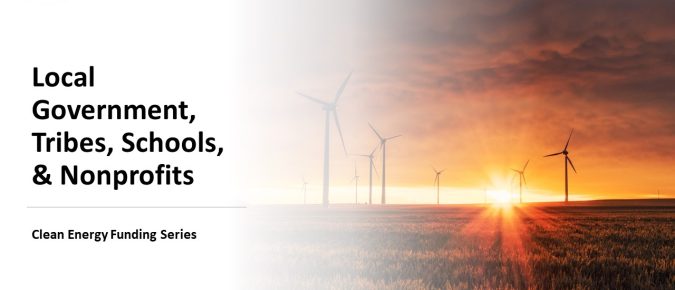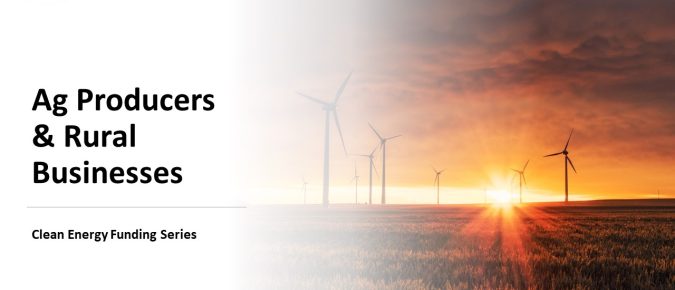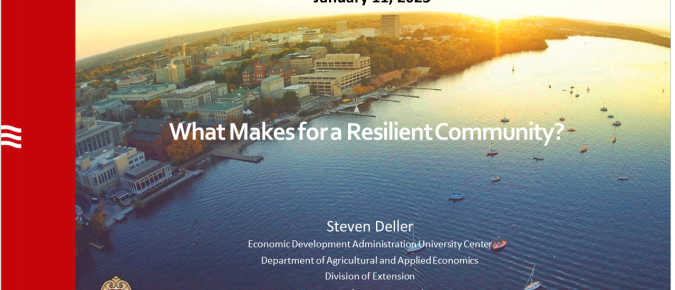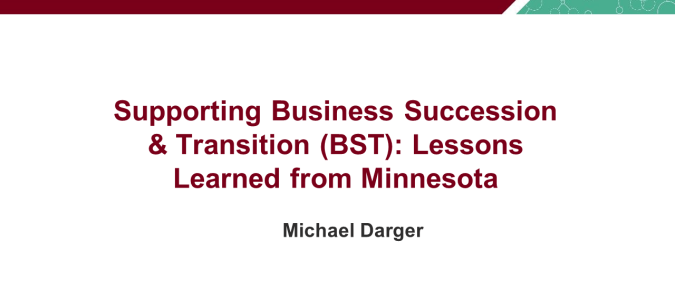This webinar describes work from the University of Minnesota-Extension to support business retention and expansion efforts in rural areas. With over 20 years of experience working with rural communities, MN-Extension has developed several resources that support economic development leaders to create a supportive ecosystem for rural business retention and expansion. Three guest presenters, Michael Darger, Marty Walsh, and Amy Schaefer, discuss the importance of business retention and expansion in rural communities.
The second webinar in the Clean Energy Funding Series explores how recent Federal funding will help support the clean energy and climate work of local government, Tribes, schools, and nonprofits. Webinar panelists provide information on current grants, payments, and financing opportunities and what you can do to prepare to apply for them.
This is the second in a series of webinars on broadband planning and funding for local counties and tribes. We discuss Broadband Equity, Access and Deployment technical assistance being offered by the Wisconsin Economic Development Corporation, Regional Economic Development Organizations, University of Wisconsin Madison-Division of Extension and Wisconsin Public Service Commission-Wisconsin Broadband Office. Participants will receive the next steps for accessing planning funds from the WI Broadband Offices along with expected deliverables.
This first webinar in the Clean Energy Funding Series focuses on agricultural producers and rural small businesses because Rural Energy for America (REAP) guaranteed grants and loans of $2 billion over the next decade is available to the ag sector now. Round 1 grants for energy efficiency and renewable energy projects are due March 31, 2023. On this webinar, you will learn about funding available at the federal and state levels through United States Department of Agriculture (USDA), Focus on Energy, and Property Assessed Clean Energy (PACE) Financing and what you need to do to put together successful applications.
In today’s world, having access to high-speed internet is essential for full participation. This includes how we work, learn, live, access healthcare, and participate in democracy. To ensure prosperity in Wisconsin communities, local and regional partners need to plan for broadband access thoughtfully. In this webinar, we discuss the Broadband Equity, Access, and Deployment (BEAD) program and provide an overview of state-wide broadband planning efforts and funding opportunities for local county and Tribal broadband planning.
One long-held strategy to foster economic growth and development is to recapture tax dollars that flow to higher units of government. Paying taxes to higher units of government, such as the state and/or federal government, is a leakage from the local economy. In a sense, these leakages are akin to a local business buying inputs from vendors outside of the community or local residents shopping outside of the community. While many communities strike to close these leakages by encouraging firms and shoppers to buy locally, such an approach does not apply to state and federal taxes. Rather, communities often strive to have those dollars returned to the community through local state and federal government spending.
As part of the 2023 Regional Economic Conditions Conference hosted by the Federal Reserve Bank of Minneapolis, Dr. Tessa Conroy provides an overview of the Wisconsin labor force.
Professor Deller addressed: Why are some communities more resilient to shocks? What can communities do to improve their ability to rebound?
Using 2021 county sales tax data, we examine the strength and weaknesses of Wisconsin retail and service markets through the application of the tools of Trade Area Analysis. Only those counties that have elected to collect the optional county sales tax are included in the analysis. Because sales tax data are used one must keep in mind that the analysis focuses only on taxable sales and may not reflect the total level of activity in the county. Using Pull Factors and measures of Surplus and Leakage the relative strengths, and weaknesses, of local retail and service markets are identified.
There are about 50,000 employer businesses owned by people over 55 years old in Minnesota. Or about 50% of the businesses in the state. In this webinar, guest presenter, Michael Darger, describes efforts at the University of Minnesota Extension to work across organizations to raise awareness among business owners and create support for business succession and transition (BST) planning in rural areas.
People of color are starting and growing businesses at high rates in Wisconsin. This study explored the experiences of BIPOC entrepreneurs in Fond du Lac County through 1-1 interviews and the Community Capitals Framework (CCF). Business owners expressed satisfaction with the natural beauty and safety of the area while describing limited technical knowledge (human capital), networks (social capital), and financial capital in the critical startup phase of their entrepreneurship. Business development technicians and educators can use this study to better support entrepreneurs of color in their Wisconsin communities.
The movement of employees to remote work due to the COVID-19 pandemic has been well-documented. Indeed, the Census Bureau recently reported that the number of people working primarily from home tripled between 2019 and 2021. This shift certainly caused hardship among some employees but was widely embraced by many others. With the World Health Organization noting that the pandemic is nearing its end, employees, businesses and communities face questions regarding the future of remote work. This webinar explores trends in remorse work and offers insights into questions about the future of remote work.
















